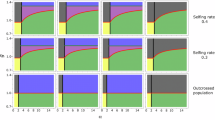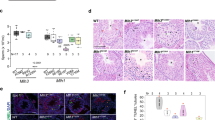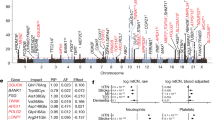Abstract
A model of evolution of reproductive systems, when sex is determined by both nuclear and cytoplasmic genes, is presented. Such a control of sex is known to facilitate the occurrence of female individuals in hermaphroditic populations, thus leading to gynodioecy. A two-cytotypes two-nuclear loci (two alleles at each nuclear locus) model for gynodioecy has been developed previously. Such gynodioecious systems are usually considered as stable, i.e. not leading to dioecy. In order to find out if the presence of females can select for male individuals when sex determination is nuclear-cytoplasmic, we followed the evolution of alleles responsible for female sterility. These alleles can be at the preceding loci or at a third locus. We show that male individuals can be selected. Dioecy evolves in less restrictive conditions than under nuclear sex determination. The same also holds for trioecy (coexistence of females, hermaphrodites and males). Nuclear-cytoplasmic polymorphism can be maintained in these reproductive systems.
Similar content being viewed by others
Article PDF
References
Atlan, A, Gouyon, P-H, Fournial, T, Pomente, D, and Couvet, D. 1991. Sex allocation in an hermaphroditic plant: the case of gynodioecy in Thymus vulgaris L. J Evol Biol, 5, 189–203.
Baker, H G. 1963. Evolutionary mechanisms in pollination biology. Science, 139, 877–883.
Belhassen, E, Dommee, B, Atlan, A, Gouyon, P-H, Pomente, D, Assouad, M W, and Couvet, D. 1991. Complex determination of male sterility in Thymus vulgaris L.: genetic and molecular analysis. Theor Appl Genet, 82, 137–143.
Charlesworth, B, and Charlesworth, D. 1978. A model for the evolution of dioecy and gynodioecy. Am Nat, 112, 975–997.
Charlesworth, D. 1981. A further study of the problem of the maintenance of females in gynodioecious species. Heredity, 46, 27–39.
Charlesworth, D. 1989. Allocation to male and female function in hermaphrodites, in sexually polymorphic populations. J Theor Biol, 139, 327–342.
Charnov, E L, Maynard Smith, J, and Bull, J J. 1976. Why be an hermaphrodite? Nature, 236, 125–127.
Delannay, X, Gouyon, P-H, and Valdeyron, G. 1981. Mathematical study of the evolution of gynodioecy with cytoplasmic inheritance under the effect of a nuclear restorer gene. Genetics, 99, 169–181.
Dommee, B, Assouad, M W, and Valdeyron, G. 1978. Natural selection and gynodioecy in Thymus vulgaris L. Bot J Linn Soc, 77, 17–28.
Frank, S A. 1989. The evolutionary dynamics of cytoplasmic male sterility. Am Nat, 133, 345–376.
Gouyon, P H, and Couvet, D. 1985. Selfish cytoplasm and adaptation: variations in the reproductive system of thyme. In: Haeck, J. and Woldendorp, J. W. (eds) Structure and Functioning of Plant Populations/2, pp. 299–319. North-Holland, New York.
Gouyon, P-H, Vichot, F, and Van Damme, J M M. 1991. Nuclear-cytoplasmic male sterility: single-point equilibria versus limit cycles. Am Nat, 137, 498–514.
Gregorius, H-R, and Ross, M D. 1987. Selection with gene-cytoplasm interactions. III. Evolution of dioecy. Evol Theory, 8, 87–89.
Gregorius, H-R, Ross, M D, and Gillet, E M. 1983. Selection in plant populations of effectively infinite size. V. Biallelic models of trioecy. Genetics, 103, 529–544.
Kaul, M L H. 1988. Male Sterility in Higher Plants. Monographs on Theoretical and Applied Genetics, vol. 4. Springer-Verlag, Berlin.
Kheyr-Pour, A. 1980. Nucleo-cytoplasmic polymorphism for male sterility in Origanum vulgare L. J Hered, 71, 253–260.
Lewis, D. 1941. Male sterility in natural populations of hermaphrodite plants. New Phytol, 40, 56–63.
Lloyd, D G. 1974. Theoretical sex ratios of dioecious and gynodioecious angiosperms. Heredity, 32, 11–34.
Maurice, S, Charlesworth, D, Desfeux, C, Couvet, D, and Gouyon, P-H. 1993. The evolution of gender in hermaphrodites of gynodioecious populations with nucleo-cytoplasmic male-sterility. Proc R Soc B, 251, 253–261.
Ross, M D. 1978. The evolution of gynodioecy and subdioecy. Evolution, 32, 174–188.
Ross, M D, and Gregorius, H-R. 1985. Selection with gene-cytoplasm interactions. II. Maintenance of gynodioecy. Genetics, 109, 427–439.
Thomson, J D, and Barret, S C H. 1981. Selection for outcrossing, sexual selection and the evolution of dioecy in plants. Am Nat, 118, 443–449.
Thomson, J D, and Brunet, J. 1990. Hypotheses for the evolution of dioecy in seed plants. Trends Ecol Evol, 5, 11–16.
Van Damme, J M M. 1983. Gynodioecy in Plantago lanceolata L. II. Inheritance of three male sterility types. Heredity, 50, 253–273.
Van Damme, J M M. 1985. Why are so many Plantago species gynodioecious? In: Haeck, J. and Woldendorp, J. W. (eds) Structure and Functioning of Plant Populations/2, pp. 241–249. North-Holland, New York.
Willson, M E. 1979. Sexual selection in plants. Am Nat, 113, 777–790.
Werren, J H. 1987. The coevolution of autosomal and cytoplasmic sex ratio factors. J Theor Biol, 124, 317–334.
Author information
Authors and Affiliations
Rights and permissions
About this article
Cite this article
Maurice, S., Belhassen, E., Couvet, D. et al. Evolution of dioecy: can nuclear–cytoplasmic interactions select for maleness?. Heredity 73, 346–354 (1994). https://doi.org/10.1038/hdy.1994.181
Received:
Issue date:
DOI: https://doi.org/10.1038/hdy.1994.181
Keywords
This article is cited by
-
Paternal Inheritance of Mitochondrial DNA May Lead to Dioecy in Conifers
Acta Biotheoretica (2024)
-
Lack of trade-offs between the male and female sexual functions in the gynodioecious herb Geranium sylvaticum
Plant Ecology (2017)
-
Ecological Marginalization Facilitated Diversification in Conifers
Evolutionary Biology (2015)
-
Disentangling the effects of mating systems and mutation rates on cytoplamic diversity in gynodioecious Silene nutans and dioecious Silene otites
Heredity (2013)
-
Pre-dispersal seed predation reduces the reproductive compensatory advantage of thrum individuals in Erythroxylum havanense (Erythroxylaceae)
Evolutionary Ecology (2008)



